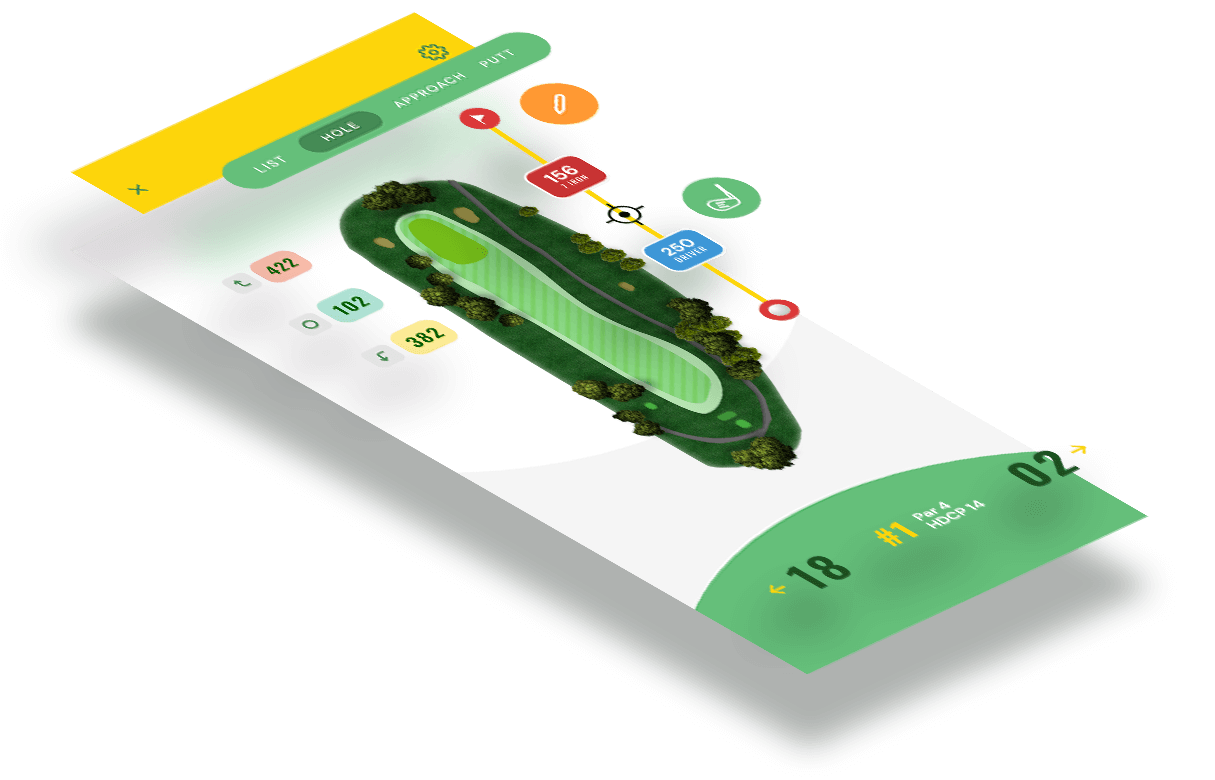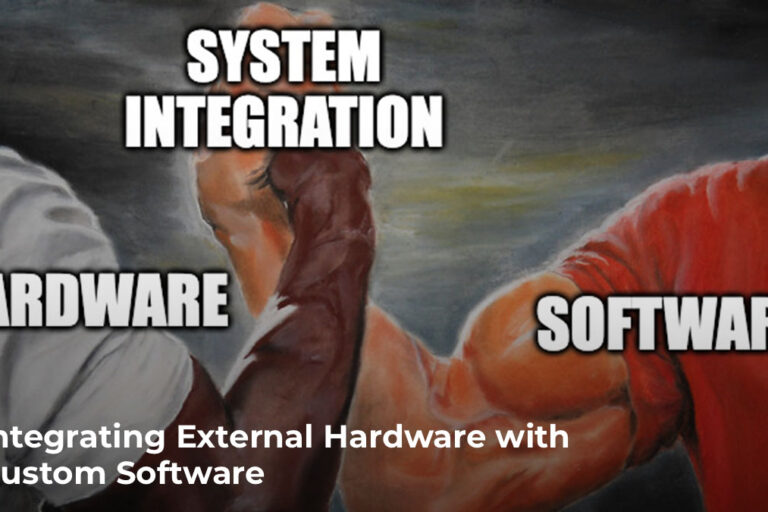A Complete Guide to Golf App Development

Golf holds a special place in the hearts of over 450 million fans worldwide. Known for its disciplined approach, golf symbolizes the art of patience and precision, earning its place as a sport of true elegance.
Today, with the rise of innovative golf apps, the game is stepping into a new era, making it easier than ever for enthusiasts to engage with the sport in exciting and meaningful ways.
From finding the perfect golf courses and offering seamless GPS navigation to delivering real-time score analysis and tips to refine every swing, these apps are transforming the golf experience. They’re even boosting social connectivity among golfers, creating a community that bridges tradition with technology.
In this blog, we’ll walk you through everything you need to know to kickstart your golf app development journey. From expert insights to potential challenges, we’ve got you covered every step of the way. Let’s dive in!
Starting Out: A Snapshot on Golf
Ever wondered where golf truly began? Well, let’s just say it’s got more twists and turns than a golf cart chase! There is no clear record of when or by whom it was first played, but historians believe it dates back to the 15th century, with variations popping up in different parts of the world. And here’s the fun part—it had many names!
The Romans called it Paganica. The Chinese named it Chuiwan. In England, it went by Cambuca, and the French referred to it as Chambot. Despite the different names, the game had one thing in common—players used a bent stick or a curved bat to hit a small, stuffed leather ball, aiming for tiny holes in the ground.
As of now, there are approximately 38,081 golf courses worldwide, with the United States leading the way, home to over 16,000 courses according to the National Golf Foundation (NGF). These numbers speak for themselves, highlighting the global popularity of the sport.
Why Should You Develop a Golf App in 2025?
With smartphones and advanced apps becoming an integral part of our daily lives, golf enthusiasts are increasingly turning to mobile apps to connect with their favorite sport and deepen their knowledge of it. Much like other sports, golf is embracing technology, blending its rich historical tradition with modern solutions through mobile apps. These apps offer a more engaging and enjoyable experience for players by enhancing their game with features like smart device connectivity, swing tracking, and real-time data analytics.
For instance, players can sync their golf app with smartwatches or other connected devices to discover nearby golf courses, track swing metrics, calculate the distance to the center of the green, and even receive instant updates or tips to improve their performance. These innovations are transforming how golfers approach the game.
According to industry forecasts, the golf software market is expected to surpass USD 934.1 billion by 2031, growing at a CAGR of 13.32% from 2024 to 2031. Moreover, the KemperSports Golfer Insights Survey shows that 70% of Gen Z golfers view the sport as a way to relax, while 75% are seeking tech-forward features like golf cart GPS. Additionally, 50% are interested in driving range ball tracking and simulator technology. This growing interest in tech-driven solutions signals a major boom in the golf app market globally. Businesses looking to tap into this trend can seize a significant opportunity for growth.

Here’s why now is the perfect time to develop a golf app:
- Golf Is Becoming More Popular: Younger players, especially Gen Z, are showing newfound interest in the sport—not just as a game, but as a way to unwind and socialize. This shift is fueled by apps like GolfLogix, which simplify the game for beginners with features like precise GPS data and visual green-reading tools. These technologies make golf feel less intimidating and more fun.
- Improvement in Real-Time Performance Trackers: Every golfer dreams of shaving strokes off their game, but how do you know what’s holding you back? AI-powered performance tracking apps like Arccos Caddie take the guesswork out. With sensors on your clubs, these apps collect data on every swing and every shot, highlighting areas where improvement is needed.
- Growing Shift Towards Convenience and Accessibility: Gone are the days of manual scorekeeping and complex course navigation. Modern golf apps streamline these processes, offering functionalities such as tee time booking, digital scorecards, and interactive course maps. This level of convenience allows golfers to focus more on their game and less on logistics. Additionally, features like course locators help players discover new venues, enhancing their overall golfing experience.
- Integration with Wearable Technology: The synergy between golf apps and wearable devices, such as smartwatches, brings a new dimension to the sport. This integration facilitates seamless tracking of performance metrics, including swing speed and distance covered, offering players real-time data at their fingertips. Additionally, Apps like Golfzon let you play on virtual replicas of real-world courses utilizing precision motion simulation, making practice sessions more immersive and fun by providing instant feedback on your swings and putts.
- Social Media Integration: Golf has always been a social sport, and apps are amplifying this aspect by introducing features that connect players globally. Through virtual tournaments, leaderboards, and in-app messaging, golfers can engage with a community of like-minded individuals, share achievements, and even partake in friendly competitions.
Therefore, there is no denying that the fusion of technology and golf through mobile applications presents a substantial opportunity for developers and businesses. By creating innovative golf apps, you can address the evolving needs of modern golfers and play a pivotal role in the sport’s growth and accessibility.
Types of Golf Apps
The golf app market offers a wide range of options, each serving a specific aspect of the golf experience. Understanding the different types can help you decide which direction to take when building your own golf app. Here are some popular categories:
- Golf Swing Analyzer apps
- Golf GPS and Rangefinder Apps
- Golf Score Apps
- Fantasy Golf League App
- Golf Instructional App
- Golf Simulator Apps
- Golf Course Finder App
- Golf Betting Apps
- Golf Social Networking Apps
- Golf Fitness and Health Apps
Golf App Development: Key Features to Include

Before diving into the golf app development process, it’s important to pinpoint the essential features your golf app should offer. Let’s highlight some must-have features that will help your app stand out in the competitive golf app market.
- Golf Course Locator/Finder: Imagine you’re in a new city and want to hit the greens. This feature helps you effortlessly find the perfect golf course nearby. Users can search based on location, availability, and operating hours, ensuring they always find a suitable spot to play.
- GPS Rangefinders: A GPS rangefinder, like one from Bushnell Golf, provides real-time, accurate distance calculations to golf holes, hazards, and the green. This means golfers can make informed decisions and improve their game.
- Putt Distance Based on Slope: Calculating putt distance is crucial, but it’s not always straightforward, especially with slopes. By using elevation data and green contouring, the app can estimate the break in a putt. This gives golfers valuable insights for refining their putting strategy.
- Golf Practice or Simulation Mode: With a simulation mode, players can practice shots virtually, whether indoors or outdoors. This feature uses ball flight data or augmented reality to ensure golfers can keep honing their skills anytime, anywhere.
- Handicap Calculation: Tracking performance is key to improvement. Automated handicap calculations allow golfers to monitor their progress over time, set goals, and celebrate their achievements. It provides a clear view of their skill level and areas to work on.
- Social Networking: Social networking features enable users to share scores, challenge friends, and join virtual tournaments, fostering a vibrant golfing community.
- Score Tracking: This feature allows players to monitor their scores, stats, and performance over multiple rounds, giving them insights into where they excel and where they could improve.
- Plays Like Distance Using Elevation: Many golf courses have hilly terrains. Understanding elevation changes between your position and the hole is crucial. The app should adjust distances to reflect these changes, providing more accurate yardages and helping golfers choose the right club.
- Fitness & Swing Analysis: This feature uses sensors and AI, for the app to analyze swings. It should also integrate with wearable technology to provide personalized feedback, recommend drills, and track golfers’ physical fitness to help them work both on their game and health.
- Tournaments & Live Leaderboards: This feature allows users to participate in virtual tournaments and compare their scores on live leaderboards. It adds an exciting competitive element to the app.
- Payment Gateway Integration: If the app enables booking golf courses or purchasing golf-related products, secure payment integrations are a must. They ensure smooth transactions and a better user experience.
- 3D Map View: Providing a 3D or topographic map view of the green with contour lines helps players understand slopes better. It gives them a clearer picture of the course layout and aids in planning their shots.
- Push Notifications: This feature allows the apps to send reminders, offers, or news updates, such as information about tee time bookings, new features, or upcoming tournaments. Push notifications ensure that users stay connected and informed about the latest happenings.
- Hardware Integration: Integration with wearables like Apple Watch, Garmin, Fitbit, and Whoop can track a golfer’s physical activity. This feature provides additional data for fitness and game analysis, enhancing the overall user experience.
Golf App Development: Technologies that Make the Difference

Developing a golf app involves leveraging a variety of advanced technologies to create a seamless and engaging user experience. Let’s take a look at the main technologies often employed:
- Mobile Development Frameworks: Golf apps are usually developed using Swift for iOS devices and Kotlin for Android devices to ensure native performance. For cross-platform compatibility, frameworks like React Native, Flutter, or Xamarin are popular choices.
- Cloud Services: Cloud platforms like AWS, Microsoft Azure, and Google Cloud are game-changers for modern golf apps. They efficiently store massive amounts of data from sensors, devices, and user activity on golf courses. Beyond storage, these services enable advanced analytics and performance tracking, transforming raw data into actionable insights.
- Real-Time Data Syncing: Bluetooth and Wi-Fi protocols are used to sync data between the app and external hardware devices, offering real-time feedback and ensuring that users have up-to-date information.
- Augmented Reality (AR): Some golf apps incorporate AR to overlay course features or create interactive simulations of the course. For those who want to play indoors, this integration takes the experience to the next level by offering a more immersive and engaging way to practice and learn.
- Machine Learning & AI: Advanced analytics powered by machine learning and AI are used for swing analysis, shot prediction, and course management suggestions. These technologies help golfers improve their game by providing personalized feedback and actionable insights.
- GPS & Geolocation: GPS APIs are essential for providing real-time distance tracking, course mapping, and shot tracking, helping golfers make informed decisions during gameplay.
How to Develop a Golf App: Let’s Get Started
Research and Planning: Just like in any business, thorough research is the foundation of success. Start by identifying your target audience, understanding their demographics, and uncovering their golf-related preferences. This insight serves as the groundwork for brainstorming innovative ideas that can truly enhance the lives of golfers and elevate their gameplay experience.
Identify Your Ideal Development Partner: If you have the technical expertise to develop a golf app on your own, you can skip this step and move forward. However, if not, selecting the right development partner is critical. A strong partner will not only understand your vision but also help identify the features that will enhance your app. At Zco, we have the best team of experienced golf app developers who are passionate about bringing your ideas to life, offering customized development services that are perfectly aligned with your business goals.
Prototype Development: In this phase, your development team (or partner) will build a basic prototype of your app that includes all the essential features you’ve planned. This prototype will serve as a rough version of the app, showcasing its layout, functionality, and user flow. It will demonstrate how pages transition, how users interact with different options, and how the overall user experience will unfold. This step helps identify potential issues early on, allowing for adjustments before the final app development begins. It’s an essential phase for refining your ideas and ensuring your vision is on the right track.
Development Phase: After finalizing the prototype, the next step is the development phase. During this stage, developers begin building the app based on the selected platform, whether it’s for a single platform (iOS or Android) or cross-platform. For instance, if you’re developing an iOS app, the team might use Swift or Objective-C, while for Android, Kotlin or Java is typically employed. For cross-platform apps, frameworks like Flutter or React Native can be used to create a consistent experience across both iOS and Android. The development phase is where your app starts to take shape, bringing all the features and functionalities to life.
Quality Assurance and Testing: By the time you reach this phase, your app will likely be fully developed, but it may still need some fine-tuning based on performance insights. Developers typically conduct beta testing with a select group of target users – golfers, in this case, to gather feedback. This helps identify any issues, refine features, and ensure the app performs seamlessly before the official launch. It’s a crucial step to ensure that the app meets the highest standards and delivers a smooth user experience.
Launching and Continuous Improvement: Your app is now ready for the spotlight, and it’s time to launch it. Use digital marketing strategies to increase visibility and attract users. However, the launch marks only the beginning of your app’s journey. Ongoing updates and improvements based on user feedback and emerging trends are key to keeping your app relevant and continuing to meet the evolving needs of your audience.
Challenges in Golf App Development
Developing a golf app involves navigating various challenges that can impact the app’s functionality, user experience, and market success. Addressing these challenges effectively is crucial to ensure the app meets users’ expectations and remains competitive.
Data Accuracy and Precision: Ensuring the accuracy of GPS data, distance measurements, and swing analysis is critical. Delays or inaccuracies in data transmission can lead to poor user experience, as golfers rely on precise information for their game improvement.
Integration with Wearable Devices: In today’s tech-savvy world, golfers often use wearables like smartwatches and fitness trackers to enhance their game. Seamlessly integrating the app with various wearable devices like smartwatches and fitness trackers can be complex. Compatibility issues and inconsistent data synchronization can affect the app’s functionality and user satisfaction.
Real-Time Data Processing: Golfers seek immediate feedback to adjust their strategies on the fly. Providing real-time feedback and analytics requires efficient data processing capabilities. Delays or lags in data processing can hinder the app’s performance and user experience.
Battery Consumption: A typical round of golf can last several hours, and features like GPS tracking, real-time syncing, and augmented reality can drain the device’s battery quickly. Ensuring both the app and the external devices are optimized for battery efficiency is essential to prevent frustration among users.
Market Competition: The golf app market is competitive, with numerous apps offering similar features. Differentiating your app through unique features and superior user experience is vital to attracting and retaining users.
Privacy and Security: Handling users’ personal and payment information comes with great responsibility. Your app must adhere to stringent security standards and comply with regulations such as GDPR to protect user data and maintain their trust.
Join Us to Make Your Golf App Dream a Reality
In this blog, we’ve explored the expanding significance of the golf industry and its growing appeal among new enthusiasts. Alongside this, the mobile app industry is experiencing remarkable growth, unlocking a multitude of opportunities for both small and large businesses.
If you’re considering developing a golf app and are seeking a partner with proven expertise, Zco Corporation is here to assist you. By analyzing market trends, implementing the latest technology, and incorporating innovative features, we can help you create a golf app that will truly stand out. Together, let’s make your golf app dream a reality and bring a fresh wave of innovation to the golfing community.












